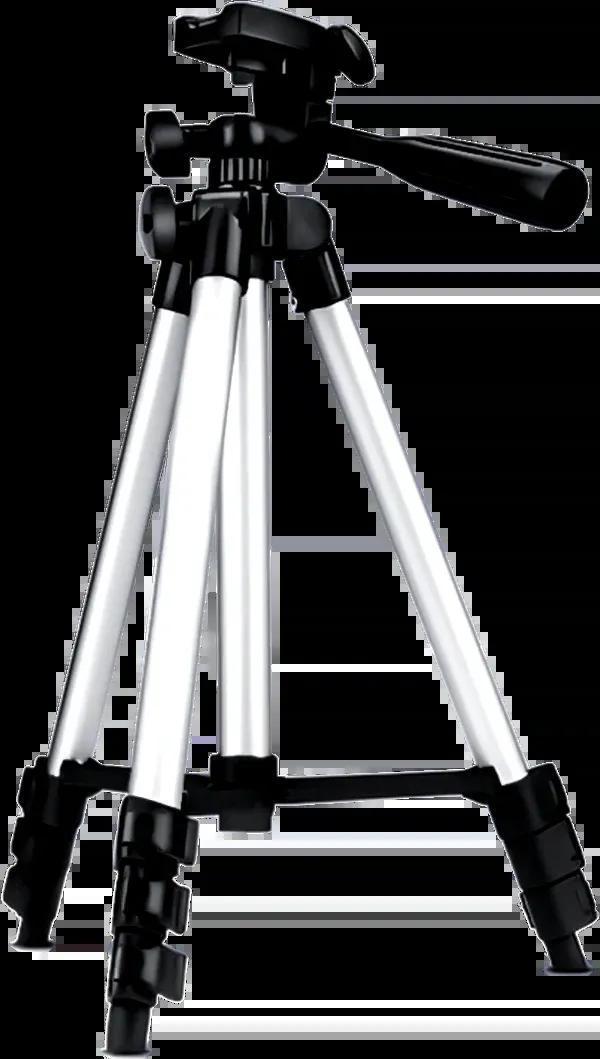
Tripod stand
Rs 1700.00
A tripod stand is an essential supporting device that stabilizes various equipment, predominantly cameras, binoculars, spotting scopes, and other optical instruments. The very essence of a tripod lies in its three-legged design, which provides a firm and balanced foundation that is integral for capturing still images, recording video, or observing distant objects. The use of a tripod stand dramatically reduces vibrations and allows for prolonged shooting sessions, making it a favorite among photographers, videographers, and nature enthusiasts alike. **1. The Anatomy of a Tripod Stand** A typical tripod stand consists of several components: - **Legs**: The three legs can be adjusted in height and are often made of materials like aluminum or carbon fiber for durability and weight considerations. - **Head**: The top part of the tripod that holds the camera or equipment and allows for tilt and rotation. There are different types of heads, like ball heads, pan-tilt heads, and fluid heads, each serving specific purposes. - **Center column**: Many tripods feature a central column that can be extended for added height or inverted for low-angle shots. - **Feet**: Tripod feet come in various designs such as rubber, spiked, or claw-like to provide optimal grip on different surfaces. **2. Why Use a Tripod Stand?** There are numerous reasons to incorporate a tripod stand into your photographic or observational toolkit. - **Stability**: A tripod minimizes blur caused by shaky hands. For long exposures or low-light conditions, a stable platform is imperative. - **Compositional Precision**: Using a tripod allows photographers to compose their shots with greater precision, enabling them to experiment with angle, framing, and perspective. - **Consistency**: A tripod stands create consistency across multiple shots, making it easier to compare and choose the best options during post-processing. - **Versatility**: Tripods are not limited to just camera equipment. They can also stabilize microphones for audio recordings, hold lights for interviews or performances, and even serve as supports for various artistic installations. **3. Types of Tripod Stands** Selecting the right tripod can depend significantly on your needs, preferences, and the type of equipment you use. Here are a few popular varieties: - **Photo Tripods**: Commonly used in photography, these tripods provide a sturdy base for cameras and usually come with adjustable heights and panning capabilities. - **Video Tripods**: These tripods are designed with fluid heads that allow for smooth panning and tilting, making them ideal for videography. They usually have a heavier build to support the extra weight of video equipment. - **Travel Tripods**: Lightweight and compact, these tripods are designed for portability, perfect for travelers and outdoor enthusiasts. Their collapsible design often makes them easier to carry without sacrificing stability. - **Mini Tripods**: Compact and easily portable, mini tripods are excellent for smartphones or small cameras. They can be used in confined spaces or as desktop supports. - **Studio Tripods**: Heavier and more robust, studio tripods can support larger cameras and additional equipment such as lights and microphones, making them preferable in a controlled environment. **4. How to Choose the Right Tripod** When looking for a tripod, consider the following factors: - **Weight Capacity**: Ensure that the tripod can support not just your camera's weight, but any additional accessories you might use. - **Height**: Look for a tripod that can extend to the height you require for your photography, as well as one that can be lowered for low-angle shots if needed. - **Material**: Tripods can be constructed from aluminum (generally lighter and more affordable) or carbon fiber (more expensive but lighter and more durable). - **Portability**: If you plan to travel frequently, consider how easily the tripod can be packed away and how much it weighs. - **Budget**: Tripods come in a wide range of prices. Consider what features are necessary for your usage before determining your budget. **5. Using a Tripod Stand Properly** To derive the maximum benefits from your tripod: - **Setup**: Ensure that your tripod is placed on a stable surface. Use all three legs for maximum stability, and adjust the height as needed. - **Locking Mechanisms**: Ensure that all levers and locks are properly secured before attaching your camera, as this will prevent any unwanted movement. - **Camera Attachment**: Use the mounting plate to attach your camera securely to the tripod. Ensure it clicks into place and is stable. - **Angle Adjustments**: Take the time to adjust the tripod head to get your desired angle before taking the shot. In conclusion, a tripod stand is not merely an accessory; it is a vital tool that influences the quality of your results, whether you're snapping photos, filming video, or observing nature. Understanding the different types of tripods, their functionalities, and how to use them effectively can elevate any creative work or project. Investing time in selecting the appropriate tripod stand will pay off significantly in your photographic or videography endeavors.
